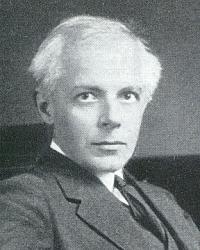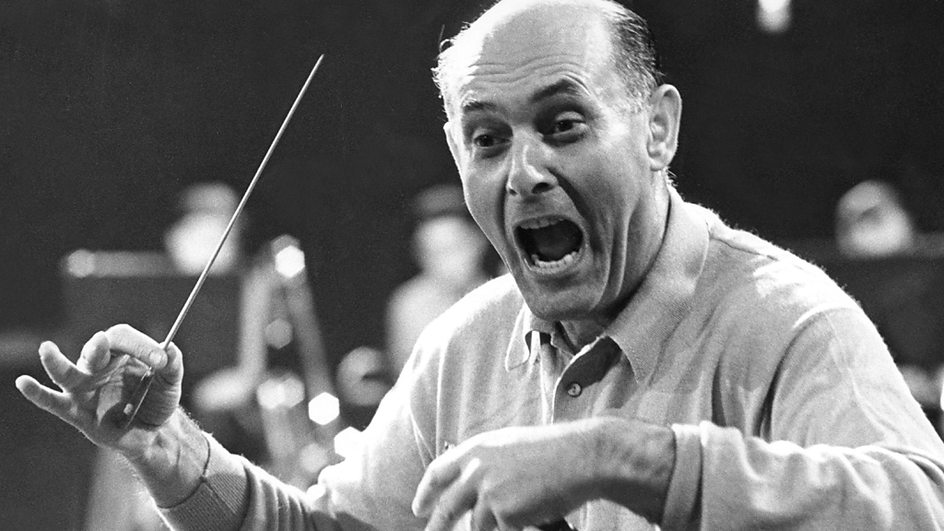It’s one of the scariest pieces ever written. Both shockingly violent and erotic, Béla Bartók’s “pantomime grotesque” ballet, The Miraculous Mandarin, was met with “catcalls, stamping, whistling and booing” at its premiere in Cologne, Germany in November, 1926. The ensuing scandal, which whipped up the fury of Cologne’s clergy and press, among others, caused the mayor, Konrad Adenauer (later the first chancellor of post-war West Germany) to ban the work on moral grounds.

The ballet’s plot, based on a story by Hungarian writer Melchior Lengyel, involves three thugs who exploit the seductive powers of a beautiful young woman to lure men into their den, where the victims are robbed. The thugs force the girl to stand in the window and dance provocatively. In Bartók’s score this seductive dance, musically depicted by the solo clarinet, occurs three times. The first two men who are lured into the trap are thrown out of the room when the thugs realize they have no money. Then, the exotic Mandarin enters. As the Mandarin is entertained by the girl’s dancing, the thugs rob him. In an attempt to kill the Mandarin, they smother him with a pillow and stab him, but to their horror he remains alive, unaffected by the wounds. Finally, the thugs release the Mandarin. He embraces the girl and, his longing fulfilled, he dies.
Bartók began work on the score in the summer of 1918. He offered this description in a letter to his wife:
It will be hellish music. The prelude before the curtain goes up will be very short and sound like pandemonium… the audience will be introduced to the [thieves’] den at the height of the hurly-burly of the metropolis.
This opening cacophony is unleashed with wild scales in the violins, outlining the striking interval of an augmented octave. This is music that sounds like the twentieth century, in all of its mechanized, mass-produced, dehumanizing glory, and that’s one reason it’s so frightening. We hear something similar in the relentless fugue at the end of the piece (beginning around 16:10), which growls like a nightmarish factory conveyer belt. Listen to the way the clarinet enters in a low, ugly register and then shrieks with increasing intensity (16:46) in this passage.
The musicologist József Ujfalussy offers this analysis in his biography of Bartók:
European art began to be populated by inhuman horrors and apocalyptic monsters. These were the creations of a world in which man’s imagination had been affected by political crises, wars, and the threat to life in all its forms… This exposure of latent horror and hidden danger and crime, together with an attempt to portray these evils in all their magnitude, was an expression of protest by 20th-century artists against the… obsolete ideals and inhumanity of contemporary civilization. [Bartók] does not see the Mandarin as a grotesque monster but rather as the personification of a primitive, barbaric force, and example of the ‘natural man’ to whom he was so strongly attracted.
There’s a hint of the exotic sounds of Eastern European folk music scattered throughout the score (Listen to the cellos at 1:30). In the years before writing The Miraculous Mandarin, Bartók traveled throughout the backroads of Hungary, Slovakia, Romania, and Bulgaria, recording and notating the distinctive and ancient sounds heard in folk villages.
At moments, Bartók’s score evokes the quiet, unrelenting terror and sense of anticipation that you might feel as you watch a horror movie. Listen for moments of irony and dark humor (the comic dance at 5:14 and, later, the use of the usually elegant waltz). Close your eyes and listen closely and you may have the sense that the instruments are coming alive, each suggesting its distinct persona.
Here is Sir Georg Solti’s recording of The Miraculous Mandarin Suite, Op. 19 with the Chicago Symphony:
https://www.youtube.com/watch?v=h9Pcc8r_SKE
Additional Listening
[unordered_list style=”tick”]
- Solti’s recording with the Chicago Symphony on iTunes and Amazon
- A Beyond the Score documentary with Pierre Boulez
- Antal Dorati’s recording of the complete ballet with the Detroit Symphony on Amazon (listen to a sample here).
- Esa-Pekka Salonen and the Los Angeles Philharmonic
- Ivan Fischer and the Budapest Festival Orchestra
[/unordered_list]


 Natural cycles, from the change of seasons to the predictable routine of day turning to night, shape our sense of time. Can you imagine how our perception of time, and subsequently music, would be different without these events?
Natural cycles, from the change of seasons to the predictable routine of day turning to night, shape our sense of time. Can you imagine how our perception of time, and subsequently music, would be different without these events?